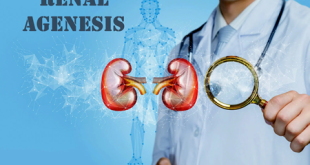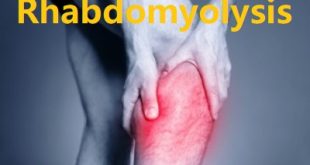Definition Renal agenesis is a congenital condition characterized by the absence of one or both kidneys at birth. The kidneys play a crucial role in filtering waste and excess fluids from the blood to form urine. The affected individual is born with either one kidney (unilateral renal agenesis) or no …
Read More »Azoospermia – Types, Treatment and Prevention
Definition Azoospermia is a medical condition characterized by the absence of sperm in a man’s ejaculate. Sperm, the male reproductive cells, are essential for fertilizing an egg and initiating the process of conception. Azoospermia can be classified into two main types: obstructive and non-obstructive. In obstructive azoospermia, there is a …
Read More »Rectocele – Definition, Causes and Treatment
Definition Rectocele is a herniation (bulge) of the front wall of the rectum into the back wall of the vagina. The tissue between the rectum and the vagina is known as the rectovaginal septum and this structure can become thin and weak over time, resulting in a rectocele. When rectoceles …
Read More »Rhinophyma – Types, Pathophysiology and Treatment
Definition Rhinophyma is a benign condition of the nasal skin that results in abnormal growth and enlargement of the nose. While this is not cancerous, it results in a reddened, “bumpy” appearance of the nose that can be highly disfiguring. The etiology of this condition is multifactorial, but it is …
Read More »Respiratory Syncytial Virus (RSV) – Causes, and Diagnosis
Definition Respiratory syncytial virus (RSV) is a common respiratory virus that infects the nose, throat, lungs, and breathing passages. RSV spreads through contact with respiratory droplets (coughing, sneezing, or kissing) from an infected person or touching surfaces contaminated with the virus and then touching your eyes, nose, or mouth. RSV …
Read More »Rhabdomyolysis – Risk Factors, Diagnosis and Prevention
What is rhabdomyolysis? Rhabdomyolysis can be a life-threatening condition caused by muscle breakdown and muscle death. This dangerous muscle damage can result from overexertion, trauma, toxic substances or disease. As muscle cells disintegrate, they release a protein called myoglobin into the blood. The kidneys are responsible for removing this myoglobin from the …
Read More »Reactive Arthritis – Symptoms, Causes, and Prevention.
Overview Reactive arthritis is a condition that causes redness and swelling (inflammation) in various joints in the body, especially the knees, feet, toes, hips and ankles. It usually develops after you’ve had an infection, particularly a sexually transmitted infection or food poisoning. In most cases, it clears up within a …
Read More »Rheumatic fever – Pathophysiology, Symptoms and Treatment
Definition Rheumatic fever is a disease that can occur following an infection caused by the Group A streptococcus bacterium. If untreated, an infection such as ‘strep throat’ may lead to a delayed complication featuring widespread inflammation in other parts of the body, particularly the joints, heart, skin and brain. Rheumatic …
Read More » Diseases Treatments Dictionary This is complete solution to read all diseases treatments Which covers Prevention, Causes, Symptoms, Medical Terms, Drugs, Prescription, Natural Remedies with cures and Treatments. Most of the common diseases were listed in names, split with categories.
Diseases Treatments Dictionary This is complete solution to read all diseases treatments Which covers Prevention, Causes, Symptoms, Medical Terms, Drugs, Prescription, Natural Remedies with cures and Treatments. Most of the common diseases were listed in names, split with categories.








